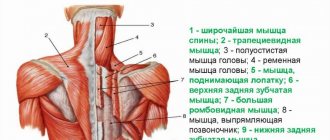It would seem that what could be more difficult than the beginning of the journey? In fact, it is very difficult to return to training than to start it, because even based on the psychological component, a beginning athlete is full of strength and enthusiasm. He sets goals and dreams of achieving his goals. When returning to the training process, whether after an injury or for any other reason, the athlete faces a number of problems, the first of which is psychological. But if emotional depression can be removed, then returning to previous results in the shortest possible time is not so easy!
Rules for training after a long break
Restarting your training is a journey that should start from the very beginning. The athlete should gradually enter the usual rhythm of training. You cannot rush, otherwise the muscles, ligaments and joints that are unaccustomed to the load will not be able to withstand it, so the likelihood of injury is very high. Also, during a break, the cardiovascular system weakens.
So, where to start training after a long break?
- The main thing is not to rush. You need to start with short workouts that should last no more than an hour. If your usual workout consisted of 6-8 exercises, then during adaptation and recovery the number of exercises should be reduced to 4-6. You also need to reduce the number of repetitions.
- It would be important to start with circuit training , which involves all muscle groups, but performing one or two exercises for each group. The fastest way to get involved is by training all muscle groups . This training should last about two weeks. The number of workouts per week should not exceed three so that the muscles have time to adapt to the load.
- During training after a break, you should take only the minimum working weight . By the way, it makes sense to add a second warm-up approach, when the first approach is performed without weights or with the minimum weight, and the second using a small weight. For example, in the bench press the athlete makes the first approach with an empty bar, and the second with two weighting discs weighing 2.5 - 5 kg each. Naturally, this is purely individual and the working weight, the number of approaches and repetitions, as well as exercises must be chosen based on your well-being and physical fitness.
- During this period, it is very important to focus on strengthening the cardiovascular system, as well as joints and ligaments . To do this, you should include more cardio in your workout and perform exercises with light weights, but with a high number of repetitions.
- The first few workouts should not exceed a duration of forty minutes , but the rest between approaches and exercises can be increased. If before the break in training the athlete needed from thirty seconds to a minute to recover between approaches, now this time can be doubled.
- Another important point is to thoroughly warm up the joints, ligaments and muscles . To do this, it will be enough to perform simple exercises aimed at developing them, for example, rotating joints, bending and turning the body, as well as cardio.
And also read how to do joint gymnastics →
Training program
To get back in shape, we offer plans designed for three, four and five classes per week.
3 days:
| Day | Ex. 1 | Ex. 2 | Ex. 3 |
| 1 | Bench press | Squats | Triceps extensions |
| 2 | Deadlift | Army press | Barbell Curl |
| 3 | Squats | Bench press | Upper block pull |
4 days:
| Day | Ex. 1 | Ex. 2 | Ex. 3 |
| 1 | Bench press | Squats | Triceps extensions |
| 2 | Deadlift | Upper block pull | Barbell Curl |
| 3 | Army press | Incline Barbell Press | Dumbbell lateral raises |
| 4 | Squats | Bench press | Barbell Curl |
5 days:
| Day | Ex. 1 | Ex. 2 | Ex. 3 |
| 1 | Bench press | Squats | Triceps extensions |
| 2 | Deadlift | Upper block pull | Barbell Curl |
| 3 | Army press | Dumbbell lateral raises | Raising dumbbells back to the sides |
| 4 | Bench press | Incline Barbell Press | Triceps extension on the upper block |
| 5 | Squats | Hamstring flexion (seated or lying down) | Barbell Curl |
Warm-up
You need to warm up before the first approach in each lesson. Otherwise, training for effective muscle recovery after a long break will not bring the desired results. Warm-up solves the following problems:
- Helps you practice the correct technique for performing exercises.
- Increases endurance and performance, which leads to muscle growth.
In bodybuilding, warming up consists of one or two easy sets. The load should be no more than 30% of the maximum.
The correct warm-up looks like this: you need to do several warm-up approaches for the first exercises for muscle groups of the day.
For example, the first lesson in a five-day program is the bench press, which “pumps” the chest, triceps and shoulders. You need to do 2 “light” approaches, then move on to heavy work. Then we start warming up for squats with a barbell and so on.
How long will it take to return to previous results?
This is purely individual. Some athletes are able to recover in a month, while others will need four months! If you average the value, then a period of two months is quite realistic. Almost every athlete fully recovers after a pause in training and returns to the previous level of training. This refers specifically to strength or endurance, not results. Let's say, having previously had a biceps volume of 48 centimeters, an athlete who has degraded in shape to 38 centimeters in volume will not return to his previous shape in a couple of months, but will only get involved in the training process.
What happens to the body when you take a long break between gym sessions?
With a long break between workouts, a number of processes are launched in the body that need to be taken into account when returning to further exercise. The endurance and strength that a person has acquired is lost at a catastrophic rate.
For example, 14 days after stopping training, overall strength indicators decrease by 40%. For this reason, a person becomes unable to take on the level of load that he could easily perform before the break.
To maintain vital functions, the body constantly saves and conserves energy received from food. During sports activities, a person accumulates muscle mass, which subsequently becomes the main source of energy expenditure. The body of a person who has not exercised for a long time reduces the amount of energy resources consumed by the muscles. In this regard, there is a gradual decrease in endurance, muscle mass, and strength.
The athlete’s physical condition after a long pause is more reminiscent of the one he had before training. After classes, he will experience pain and aching muscles, just like the first time. The only difference is that a previously trained person knows how to perform this or that exercise.
Be sure to check out:
Split program: training to pump muscles with proven effectiveness Training program for a month: rules for drawing up a plan and sets of exercises Detailed training program with your own weight at home Effective training program for gaining muscle mass 3 times a week
Recovery after a break from training: what science and experts say.
In the lives of all athletes, unpleasant events occur that disrupt their rhythm and jeopardize the results achieved. With regular visits to the gym, a system for gaining muscle mass is developed that cannot be disrupted. But, unfortunately, no one is immune from unforeseen circumstances that interrupt normal activities.
It could be an injury that keeps you off the gym for a few more weeks. Or, because of your child, you don’t have enough time to study. And if we also take into account the consequences of the global pandemic, as a result of which many establishments were forced to close for a long time...
A few weeks after inactivity, the first consequences appear - you lose the achievements gained through hard work over a long time, and gradually return to the initial state of your body before visiting the gym. Naturally, you can choose a basic program for working with your own weight at home, but such exercises are unlikely to replace a full-fledged barbell and squat rack.
Under such circumstances, many people panic. They worry that all the results will be lost. Even after returning to the gym, you will have to work hard to restore tone and gain muscle mass.
But in practice the situation looks rosier. Athletes who quickly lose muscle gain it just as quickly with hard training, so you don't have to start from scratch.
Before starting training, you should understand the specifics of gaining muscle mass . According to the experts at CliffsNotes:
- training with heavy objects increases the load on the body , which stimulates the reaction of the muscles, causing them to adapt to stressful conditions and increase;
- to combat stress, diets are used - with a large amount of calories and proteins, as well as rest;
- As recovery progresses, “hypertrophy” develops—an increase in the size and density of individual muscle fibers .
see also
Is it possible to build muscle by doing only push-ups? If not, how else can you exercise at home?
Where to start training if you haven’t trained for a long time
The first rule that an athlete should remember after a long period of inactivity is a gradual and systematic return to the previous level, despite the desire to quickly achieve the same results.
There are several basic rules to consider before returning to sports:
- Organize classes twice a week. The body is not yet ready for a higher level of stress. This schedule is followed for the first 2 months after the pause. Before starting more intense workouts, you should consult your doctor or fitness instructor.
- Each program begins with a short warm-up that prepares the muscles for further work. During a break from sports, ligaments and joints lose elasticity, so warming them up before going to the gym is mandatory.
- Perform exercises that work individual muscle groups with equal intensity. You can’t concentrate on pumping up any one area of the body. The ideal training option in the first days after a break is 1 complex each for the muscles of the back, chest, legs, biceps and triceps. To avoid “wear and tear” of the body, it is necessary to leave strength in reserve, even if it is physically possible to do more exercises or approaches.
Returning after a long break is also a great opportunity to review your previous training program. Previously, it was impossible to change the technique of performing some complexes, as this would mean reducing the load on the body.
After the break, you will have to start the program with the simplest classes, so you can learn new exercises. However, you should remember one more rule - an experienced instructor should come up with a training scheme after a long pause.
How quickly muscles go away
polar.com
Muscles do not begin to contract after several days of inactivity. In practice, this process takes about 3-4 weeks after stopping training to pump a particular muscle group.
According to a meta-analysis from Legion Athletics, this is what is lost along with muscle mass:
- Glycogen. After 4 weeks of inactivity, the level of glycogen, which affects muscle size and volume, is reduced by 2 times;
- Power reserve. After 3 weeks, the natural reserve of strength decreases rapidly. Fitness will be lost even sooner, so don't be surprised if you start to feel tired once you resume training;
- Muscle fiber nuclei - after 3 months they are destroyed.
These studies focus on when you consumed sufficient protein and calories during your downtime, i.e. did not experience energy deficiency and maintained relatively normal activity.
You will also have to watch for a decline in overall athleticism and health. In a paper analyzing the effects of 4 weeks of training on endurance athletes, strength coach Carmen Bott pointed out some common indicators: decreased aerobic endurance, decreased insulin sensitivity, decreased ATP production, and muscle atrophy.
The specialist also noted that the more effective the training was, the faster and stronger the listed signs will be expressed. On the other hand, it has been proven that strength reserves can be maintained during the first month after leaving training.
A 2013 study of football and rugby players showed that strength levels remained unchanged until 3 weeks of fasting. Then the intensity of the decrease in the strength of muscle joints begins to increase.
Concomitant factors influencing destructive processes include age. The older a person is, the faster he loses muscle strength after quitting training. A 2000 study tested 2 groups of people:
- representatives of the age group of 20-30 years. They lost about 8% of their strength in 31 weeks of no training;
- persons aged 65-75 years. The percentage of losses reached 14.
see also
How to do pull-ups without a horizontal bar
Essentially, regardless of age factors or physical fitness, if you have followed a proper diet, the intensity of muscle loss will be negligible. If basic recommendations are not followed, you can lose your strength index in a short time.
Impact of a break on physical health
There are many reasons why regular workouts in the fitness room were interrupted: vacation, business trip, birth of a child, illness, etc. One of the key circumstances is the duration of the break. Recommendations from experienced experts will help you return your body to working condition and get used to physical activity again.
Training and physical activity improve the functioning of internal organs, increase physical endurance and the body's resistance to infections. Oxygen absorption deteriorates, which is also not recommended. At certain time intervals, the state of the body will be characterized by the following manifestations:
- The break lasted several weeks . The cardiovascular and respiratory systems work worse, while there is enough strength. Endurance levels are still high
- 1 year . Cardio exercises will be 15% more difficult, and the strength parameters of your body will be reduced by half, and this is the minimum indicator
- Years have passed. We'll have to start from the very beginning. If you previously had good results and were in appropriate physical condition, then recovery will be faster and more effective.
The new program is selected depending on the reason why you had to give up the fitness room for a while. The duration of the break is also of great importance when creating a training program. Below we will consider the correct actions for each case.
Video: DOCTOR / BODYBUILDER - how to train after rest.
https://youtu.be/PG-fOGrYeVk










